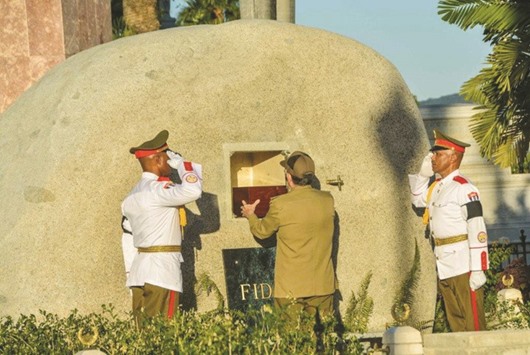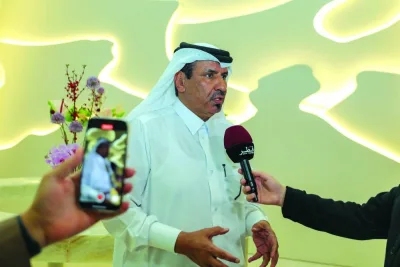President Raul Castro placed the wooden box containing his elder brother’s cremated remains in the 10 foot rounded stone at the Santa Ifigenia Cemetery, photos released by state media showed.
Castro died on November 25 at age 90.
A dark plaque engraved with the word “Fidel” was then fixed over the niche.
Dressed in his four star general military uniform, Raul Castro saluted the rock, which was flanked by two honour guards in white uniform.
Castro gave Cuba an outsized influence in world affairs.
He was feted by Nelson Mandela for helping to end apartheid at a time when the West supported the racist system, but helped take the world to the brink of nuclear war during the Cuban missile crisis.
His monument sits a few steps from the mausoleum of independence hero Jose Marti, another towering figure of Cuban history who Castro long admired.
Castro had been out of power for a decade but never far from the centre of public life.
In his final years he wrote a periodic column on world and local matters and received foreign dignitaries at his home on the outskirts of Havana.
Forced to step down due to an intestinal ailment, he ceded power to his younger brother, at first provisionally in 2006, then definitively in 2008.
In keeping with his wishes, Castro’s image will not be immortalised with statues and public places will not be named after him, his brother said on Saturday.
His send off seemed reflective of a man who had a vast public career but could be intensely private about his health and personal life.
Cubans still do not know the cause of his death, or where he was cremated.
After a three-day caravan in which hundreds of thousands of people lined streets and packed squares to bid him farewell, the last ceremony was not broadcast on Cuban media.
Instead, in Havana, military cannons unleashed a 21-gun salute that thundered across the capital city as the ceremony began hundreds of miles to the south east.
Castro’s memorial at the cemetery is a large, round stone placed close to, but dwarfed by, Marti’s mausoleum, according to a Reuters witness.
The stone is a few steps from a monument to rebels who died fighting in Castro’s failed 1953 attack on the Moncada barracks in Santiago, the start of the revolution.



